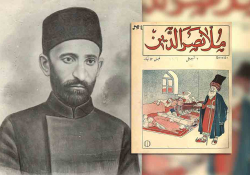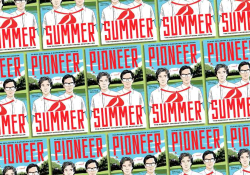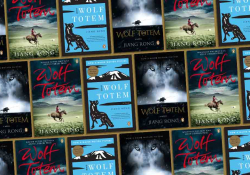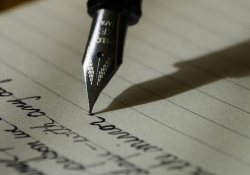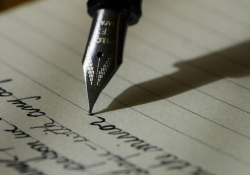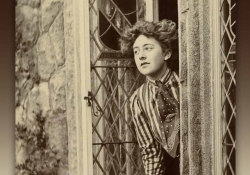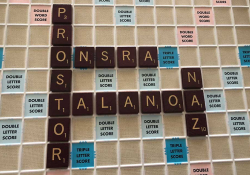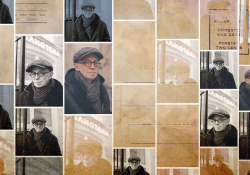A Journey to Translation

In April 2007, at the invitation of a charity called the Create Trust, I travelled to Addis Ababa to run some creative workshops with the Ethiopian community using writing, drama, and storytelling. I was there for three weeks, working in a variety of settings: a school for street children; a drop-in center for young girls caught up in the sex trade; and a community center for poor and disadvantaged women with the support of organizations such as the Forum for Street Children (FSCE), CHADET (Child Aid Ethiopia), Hapsco (Hiwot HIV/AIDS Prevention, Care, and Support Organisation), and GOAL UK.
Prior to this trip I had never met anyone Ethiopian or visited East Africa. I did not know how to speak or read Amharic, and I was a long way from being able to appreciate the multiplicity of languages (amongst a population of eighty million, more than eighty different languages are spoken), religions, and cultural traditions that make up Ethiopian society. I was extremely grateful to have assistance from Terhas and Helen, two young Ethiopian women, both studying at Addis Ababa University, who were able to help me communicate with the people I was working with. Storytelling also helped.
The telling of stories, especially traditional ones, has a way of reaching across language and cultural barriers more effectively than any other kind of written or spoken communication. Before going, I trawled libraries and the Internet for translations of Ethiopian stories and folktales, which I tried to learn by heart. I also visited the author Elizabeth Laird, who shared her extensive knowledge of the history and culture of the country, told me stories, and talked to me about her Ethiopian experiences—the subject of many of her books for children and young people.
Amongst the handful of Amharic words I acquired while I was there, I learned the word for “story,” which seemed to magically draw all those within earshot. Even the whisper of Teret, teret (A story, a story) would result in a chorus of Ye lam beret! (which literally means “a cow’s pen,” implying that the listeners would like as many stories as might fill it) and an attentive audience around me. I would tell the stories in English, but because they were known stories, Helen and Terhas needed only to say a few key words in Amharic and then any other clarifications necessary would be dealt with in the host of different Ethiopian languages from all those assembled.
Although Ethiopia was easily the most “other” place I had ever been to in terms of sights, sounds, tastes, and smells, there was also something deeply familiar about the people and their stories, which seemed to contain a directness and humor I felt at home with. Revisiting the story of the Queen of Sheba and her meeting with King Solomon, it was not a surprise for me to be reminded that the earliest footholds of Judaism lie embedded in the Ethiopian culture.
Much of the work I was doing in Addis Ababa was centered around the Mercato, a colorful area where many of the poorest in the population congregate. The Mercato, meaning “New Market,” covers several square miles and is the largest open-air market in Africa, surrounded on all sides by dust, beggars, and noise. My two translator friends were anxious that I see something else of the country other than this crazy, crowded center. They arranged a bus trip to Debre Zeit, a resort town known for its seven crater lakes, in a separate woreda (region) of Ethiopia southeast of Addis.
We spent a wonderful day there transported by Gari (horse-drawn cars) from the town center to the lakes, where we spent the afternoon spotting birds—at least as many different species as there are native languages in the country. On the way back to Addis that evening, squashed into the crowded bus, I sat next to Helen. She was reading what looked like a small pamphlet, and I asked her what it was. She said it was a book of poetry by a young writer who was gaining celebrity status for his stories, poetry, satirical comedy, and social commentary. He had graduated a few years before from Addis Ababa University, and Helen and Terhas both knew him, slightly. The writer was Bewketu Seyoum. The booklet she was reading from was Bewketu’s first collection, Nwari Alba Gojowoch (Empty nests). I asked Helen if she would read some of the poems out loud to me in Amharic.
I had an inkling that if I could find some way to get inside the meaning of the poems and capture something of the sound and feel and humor of them, I might also begin to appreciate something deeper and more subtle about the country and its people.
On some of the pages were intriguing little black-and-white illustrations, Seyoum’s own. Most were of trees, but they were trees that looked like figures. One looked like a man hanging with a noose round his neck, another like an elegant woman with branches for arms, and another like a round baby.
I liked the sound of the poems—they were sermonic and songlike at the same time—and asked her if she could give me a rough translation. Helen told me the poem she was reading was a love poem of sorts. The speaker in the poem begs to be permitted to give to the one they love, though it might leave them feeling diminished and looking ridiculous. They want to donate their height, their hair, the blood from their veins, their hands, breast, heart, thoughts, and desires and ask only to be allowed to keep their own eyes in order to continue to see the other (which in a way will be like looking at themselves). Helen tried to paraphrase a couple more for me but was frustrated, she said, not to be able to convey them in such a way that would really make me understand how funny the poems were, how serious their message, or their beauty.
“Let me have a go,” I said. “Let me see if I can try to do an English version that works.” It was frustrating for me, too, not to be able to fully appreciate what was making the poems in this book so popular with young Ethiopians (Helen told me that the book had sold out of its first run and was already being reprinted) and so controversial. I had an inkling that if I could find some way to get inside the meaning of the poems and capture something of the sound and feel and humor of them, I might also begin to appreciate something deeper and more subtle about the country and its people.
Helen chose one for me to work on, “The Definition of Truth.” I made notes on what she told me about the poem, the story it was telling, and how each line worked and looked. We transliterated as many of the words as possible into Roman characters, and when we got off the bus in Addis, we found a print shop that would make a photocopy of the Amharic version from the book for me to work from.
Producing an English version of Bewketu’s poem took me much longer than I anticipated. The day after the trip to Debre Zeit was a Sunday, and I had no workshops to run. I began work on the poem in the morning and was still tinkering at midnight. I carried it with me through the next day and the one after that, honing the translation whilst listening to the Amharic being spoken around me in the workshops, trying to get some of the Ethiopian inflection and flavor into the English words and also to retain the essence and let the poem tell its own story clearly and honestly.
Like the message in that first poem of Bewketu’s Helen had read to me, if one (the poem or the poet, say) donates their height, hair, the blood from their veins, their hands, breast, heart, thoughts, and desires to another (the translator) but retains their ability to see, the result could be like looking at themselves.
Years ago, in the early 1980s, I took part in a poetry performance tour accompanied by a signer for the deaf. The first time I read my poetry alongside the signer I stopped midflow, I was so transfixed to see the way my words were being interpreted by the signer’s actions. That’s beautiful, I thought, watching what the signer was doing. I wrote that! I wanted to imagine that if Bewketu Seyoum were ever to see or hear my English version he might say, “That’s beautiful. I wrote that!”
No one had asked me to do this, not the writer of the poem nor any of his Ethiopian readers, and yet I felt compelled. Being in Ethiopia for those few short weeks was extraordinary. Every day someone or something about the country impacted me in a profound way, and I knew that no amount of picture-taking or postcard- writing would really convey to anyone who hadn’t been here the essential qualities of this place, its otherness, its heartbeat, its stories, and its people. But translation might. Like the message in that first poem of Bewketu’s Helen had read to me, if one (the poem or the poet, say) donates their height, hair, the blood from their veins, their hands, breast, heart, thoughts, and desires to another (the translator) but retains their ability to see, the result could be like looking at themselves.
I finished two translations of Bewketu’s work, the poem mentioned above, “Let Me Give You,” and “The Definition of Truth,” and gave the two poems and my email address to Helen and Terhas to send to him. In the meantime, I left Addis, and the otherness of my Ethiopian experience began to fade slowly as I returned to my monolingual existence in London.
That was in early May. On June 25, I got an email from Bewketu Seyoum.
Dear Cheryl, he wrote, I have read your translation of my poems and it was wonderful. . . . Though my books are applauded here in Ethiopia I am not sure as to whether they have any meaning to European readers . . . but if you are interested I want to work with you on the translation of both my poems and stories. What do you think? Let me know.
Thanks.
Bewketu
 Since 2007 Bewketu and I have corresponded regularly, and he has sent me many poems and stories to work on. Our way of working has not been that different than it was with Helen that day on the bus coming back from Debre Zeit. Bewketu sends me the Amharic version and/or the transliterated version in Roman characters so I can “hear” what it is supposed to sound like. He also sends me his rough translation in English and a glossary of any words very specific to Ethiopia. My versions will then get batted back and forth between us until we are happy that the work flows beautifully in English whilst retaining all the Ethiopian subtleties and nuance.
Since 2007 Bewketu and I have corresponded regularly, and he has sent me many poems and stories to work on. Our way of working has not been that different than it was with Helen that day on the bus coming back from Debre Zeit. Bewketu sends me the Amharic version and/or the transliterated version in Roman characters so I can “hear” what it is supposed to sound like. He also sends me his rough translation in English and a glossary of any words very specific to Ethiopia. My versions will then get batted back and forth between us until we are happy that the work flows beautifully in English whilst retaining all the Ethiopian subtleties and nuance.
Last spring, Bewketu wrote an article for an Addis newspaper deemed “blasphemy” by the Ethiopian Orthodoxy, which resulted in his being physically attacked by a church deacon. The article refers to the story of the winged saint, Teklehaimanot, as an example of the way certain staid religious beliefs stultify political thinking and progress in Ethiopian society. The attack caused much controversy and left Seyoum hospitalized for his injuries. Shocked at hearing the news, I produced an English translation of that article, “A Saint with No Legs,” which was published in the Ethiopian Reporter in July 2011 and can be read on the paper’s website.
In July of this year, as part of the Cultural Olympiad 2012 London Festival, a huge gathering of world poets took place under the banner of Poetry Parnassus. There were 204 poets invited from the 204 participating nations, and Bewketu was the poet chosen to represent Ethiopia. As a UK-based poet, I was involved running some workshops and was also appointed as a “buddy” to some of the poets from incoming nations, including Ethiopia.
Previously our communication had happened at a reasonably relaxed pace, often with gaps of weeks or months between email exchanges. In the weeks leading up to the festival, Bewketu sent me several new poems and stories to look at, and once he arrived in the UK, Bewketu continued with fervor and urgency to write fresh material that contained his trademark wit and wry observation and reflected the new experiences he was having.
Like many other participating poets, Poetry Parnassus presented Bewketu with an opportunity to leave his homeland for the first time and was also a chance to try out new material in front of a non-Ethiopian audience. At various venues during the festival and around the country, Bewketu read his work in the original Amharic alongside a reader of the English translations, some by me and some by another British poet who has also been translating Bewketu’s work, Chris Beckett.
Meeting Bewketu, working in real time, face-to-face with him to produce English versions of new poems as fast as he was writing them in Amharic was an exhilarating and challenging experience—a different kind of collaboration that was foreign ground for both of us. Ironically but not surprisingly, perhaps what proved hardest to translate in that process was that which was most familiar. After much time, and a few beers, discussing the last word of the last line of this poem written for performance at the “Out of Africa” event on the last night of the Poetry Parnassus Festival, Bewketu and I agreed that sometimes it is practically impossible to express oneself completely in any other language than one’s own. We had to settle with this.
Where the Heart Is
Bewketu Seyoum
London is not a city
it is an anthill powered by electricity
London is not a city
it is a strange planet peopled by strange beings
who take their food with an iron hand
and three pronged fingers
who carry their heads in a briefcase
London is not a city
it is a wonderland Lewis Carroll could not have invented
where tall statues copulate
and father other statues
where even birds ride elevators
to the tops of trees
London is not a city
it is a wild den of Calypso
you find everything here
but you miss home.
Cheryl Moskowitz is a US-born, UK-based poet, novelist, and playwright and was a lecturer at Sussex University where she taught creative writing and personal development at the graduate level from 1996 to 2010. Her publications include a novel, Wyoming Trail (Granta, 1998), and the poetry collection The Girl Is Smiling (Circle Time Press, 2012)(Available on Amazon.com). She was a prizewinner in the 2010 Bridport and Troubadour Poetry Competitions and the 2011 Hippocrates Prize for Poetry and Medicine.
Editorial note: Bewketu’s story “It’s All the Same,” click here.
